Last updated: 14 May 2025
With RHS Flower Show and event season underway, we’ve teamed up with the RHS to bring you tips and tricks to help you make more sustainable choices when gardening this summer. Because small changes to how we garden can make a significant difference to our planet.
Whether you’re looking after raised beds, pots on the balcony, a colourful window planter or cultivating seedlings on a sunny windowsill, now’s a good time to consider how to be more sustainable when gardening. There are plenty of tips and tricks that can be used across green spaces of all shapes and sizes, with many of them simple to implement, as well as being low cost.
Head of Sustainability at the Royal Horticultural Society, Malcolm Anderson, says: “Making small changes in our outdoor spaces whether that’s a balcony, large garden or courtyard, can have a big impact. Our outdoor spaces can provide food, beauty and biodiversity, all while delivering mental and physical wellbeing too.
“Sustainable gardening isn’t just about plants – it’s about using resources wisely, reducing wastage and creating spaces that feed, soothe and inspire us as humans yet deliver positive benefits for nature.”
Take a look at these tips to get started…
- Compost your kitchen waste
- Plant for pollinators
- Grow your own edibles
- Grow your own bunches
- Go peat-free
- Go plastic-free
- Water wisely
- Build a bug hotel
- Go electric
- Test your soil
- Build a pond
1. Compost your garden and kitchen waste
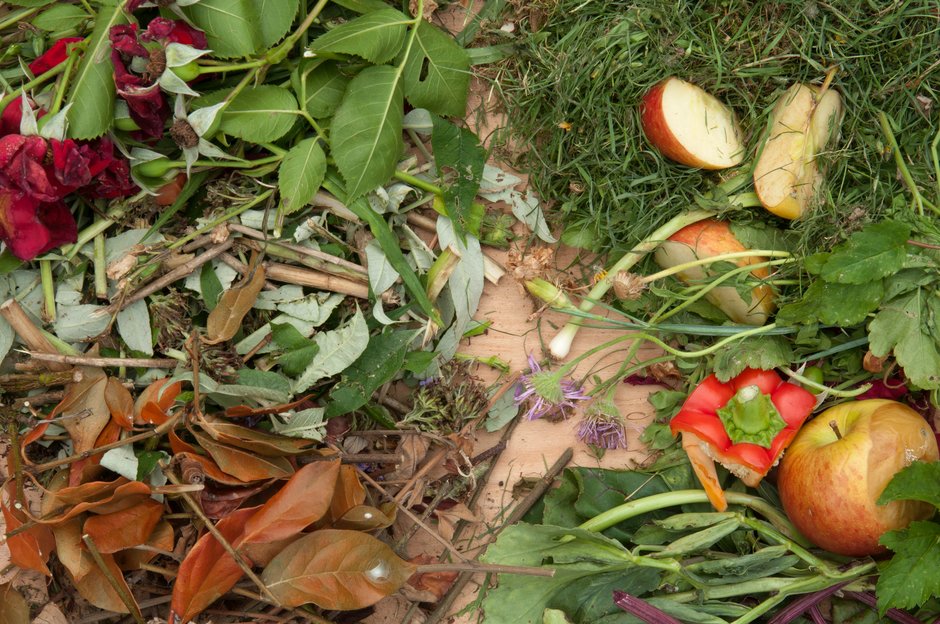
Creating your own compost is one of the most effective ways to reduce your gardening carbon footprint. According to the RHS, every 1kg of homemade compost typically saves over 0.1kg of CO2 emissions, which could save more than 5.1kg carbon per gardener every year.
For those with gardens, a compost bin in a shady spot can transform garden waste and plant-based kitchen scraps into nutrient-rich soil conditioner. No garden? No problem – compact kitchen compost bins or wormeries work brilliantly for those living in flats as they take up barely more space than a small waste bin.
2. Plant for pollinators
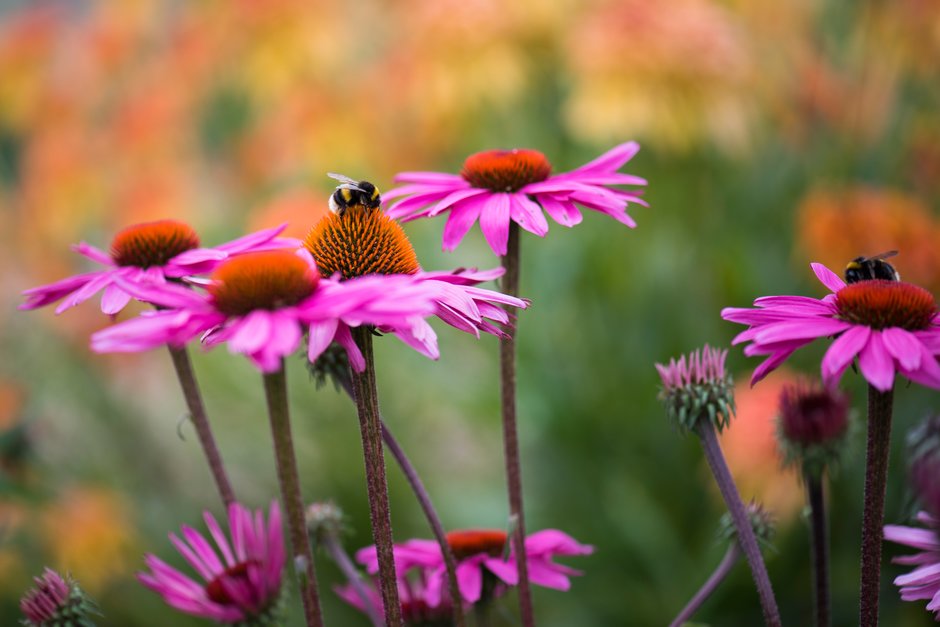
We recently spoke to members of our research panel, Living Room, to find out just how important households’ outdoor space is to them. As well as almost all (9 out of 10 people) telling us they’d miss their outdoor space if they didn’t have access to it, almost three quarters (73%) of respondents told us that they use their outdoor spaces for planting.
Pollinators like bees, butterflies and hoverflies are vital for our ecosystem but are facing serious decline due to habitat loss. By choosing pollinator-friendly plants, you can create valuable feeding stations for these important insects.
Even the smallest spaces can become pollinator havens. Window boxes and balcony pots filled with lavender, salvias or herbs such as rosemary and thyme will attract bees and butterflies. For gardens, aim for a succession of flowering plants that provide nectar and pollen throughout the seasons – early spring bulbs, summer-flowering perennials and late-blooming sedums will ensure a constant food supply.
Look for the RHS Plants for Pollinators logo when buying plants, or check their online lists for inspiration. Try to include some native wildflowers alongside garden varieties, as these often support a wider range of insect species.
3. Grow your own edibles

Growing even a small amount of your own food can significantly reduce your carbon footprint. Shop-bought fruit and vegetables often come with extensive food miles, packaging and chemical treatments, all of which impact the environment.
For those with limited space, herbs are perfect starter crops – parsley, basil and mint thrive on sunny windowsills and balconies. Salad leaves grow well in shallow containers, while cherry tomatoes and chillies are ideal for pots on a sunny balcony or patio.
If you have a garden, consider dedicating a small area to vegetables – even a 1m² raised bed can produce an impressive crop of leaves, roots and fruits throughout the growing season. Beginners might want to start with reliable crops such as courgettes, beans, potatoes and onions.
4. Grow your own bunches
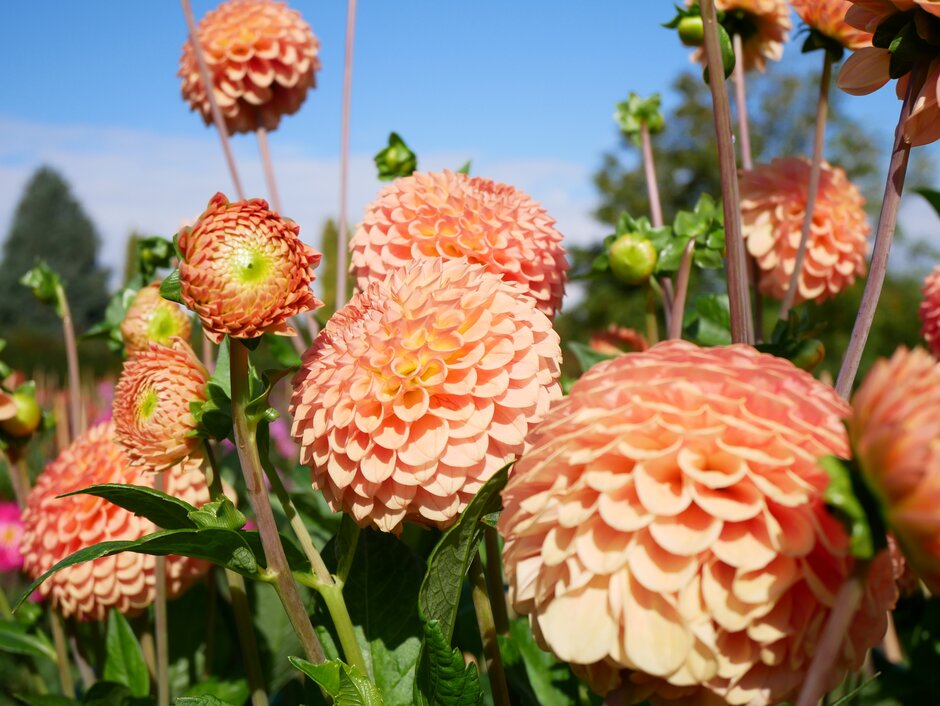
Cut flowers from shops often have a substantial environmental impact. According to the RHS, some imported flowers have up to 10 times the carbon footprint of home or UK-grown bouquets. Growing your own can save up to 7.9kg carbon per bunch.
Even if you only have window boxes or balcony planters, you can still grow compact flowering plants like sweet peas, calendula or cosmos for cutting. Those with gardens might dedicate a small area to cut flowers – dahlias, zinnias, sunflowers and snapdragons are all excellent choices.
For a continuous supply, sow seeds in batches every few weeks during spring and early summer. Mix in some foliage plants like eucalyptus or herbs for greenery, and plant spring bulbs like daffodils and tulips in autumn for early season blooms.
5. Go peat-free
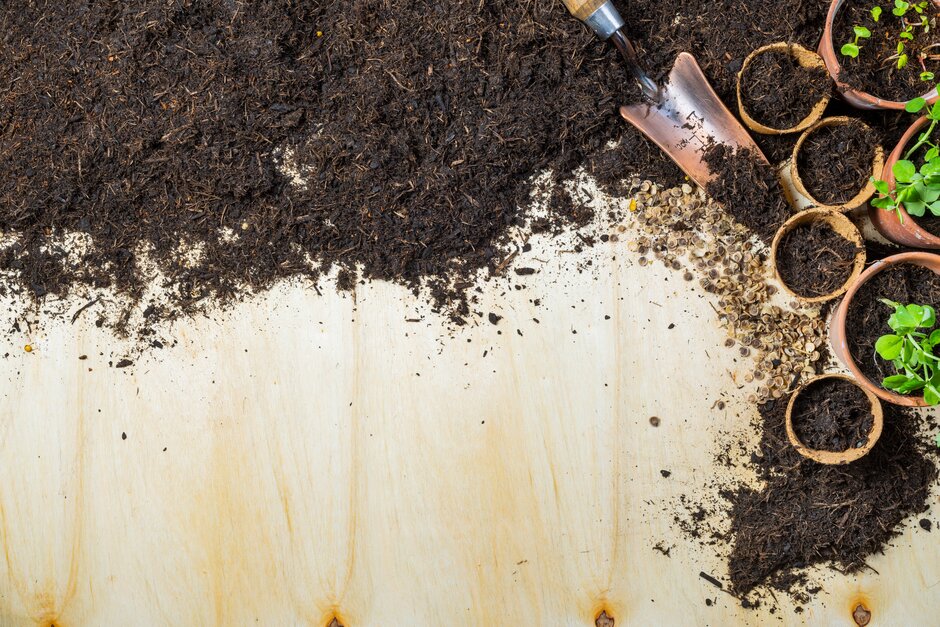
Peatlands are the world’s largest carbon stores on land – they hold more carbon than all the world’s forests combined. When peat is extracted for garden use, this stored carbon is released, contributing to climate change.
The good news is that modern peat-free composts have improved dramatically in recent years. Look for quality peat-free products for your gardening needs, whether you’re sowing seeds, potting up plants or improving garden soil.
If you’re buying plants, ask your garden centre if they’ve been grown in peat-free compost. You can also make your own potting mix by combining homemade compost with other ingredients like leaf mould, coir (coconut fibre) and sharp sand.
6. Go plastic-free
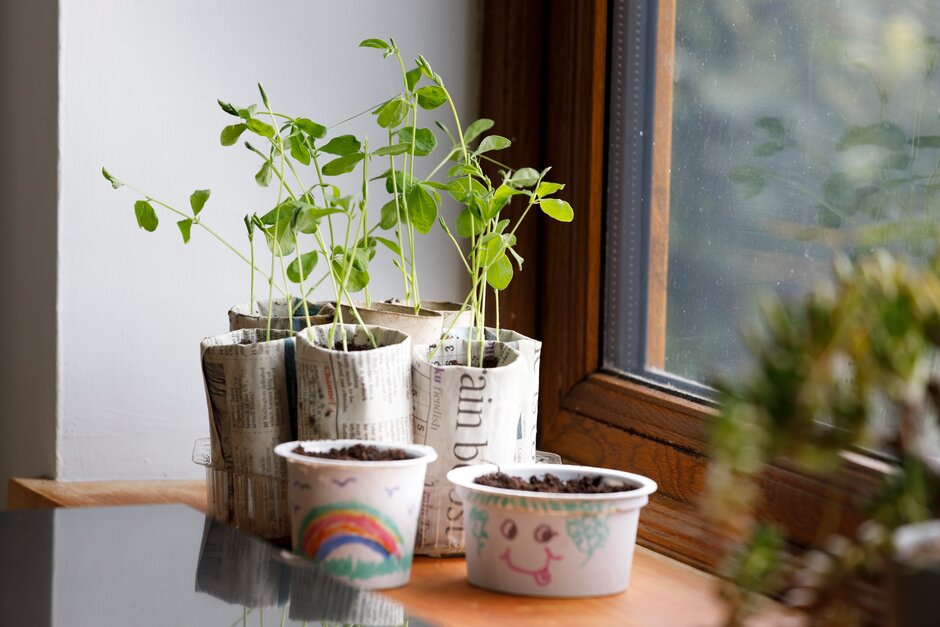
Plastic is widespread in gardening and can be found in almost everything from pots to tools. However, there are many eco-friendly alternatives available. Start by swapping plastic pots for biodegradable options made from paper, coir or wood fibre, or reuse existing plastic pots for as long as possible.
For plant labels, try wooden lolly sticks or cut strips from old plastic containers. Natural twine made from jute or hemp is a great alternative to plastic garden ties, while metal or wooden tools will outlast plastic ones and can often be repaired instead of replaced.
If you’re protecting crops, look for biodegradable netting and fleece made from natural materials rather than plastic versions. Even small swaps like choosing cardboard seed trays instead of plastic ones can make a difference when multiplied across millions of gardeners.
7. Water wisely
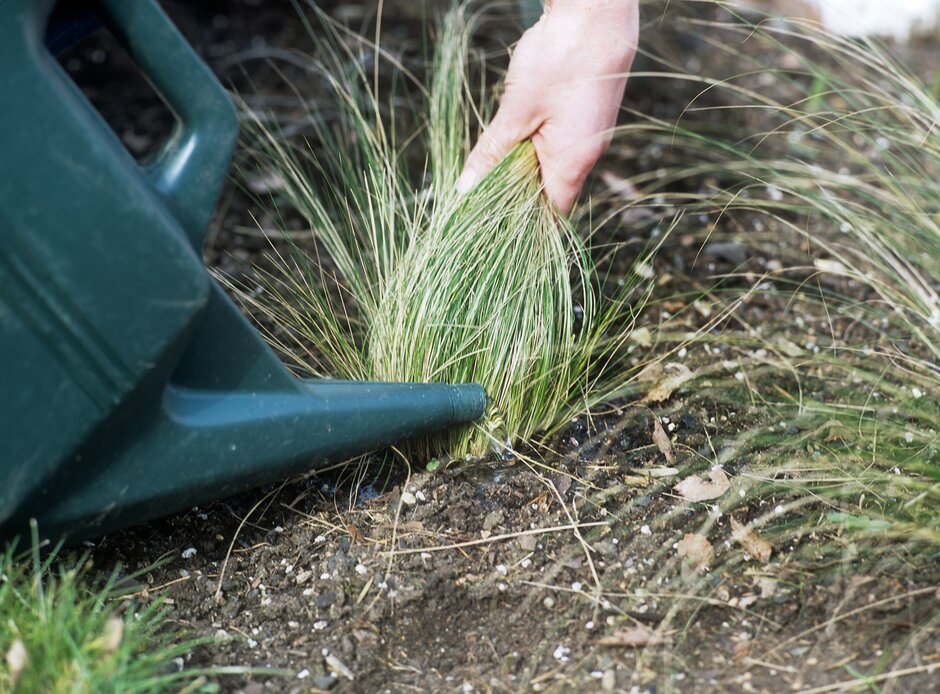
Water is a precious resource, and climate change is making rainfall patterns less predictable. Collecting rainwater in water butts is a simple way to reduce your reliance on mains water for the garden.
According to the RHS, even in dry districts, around 24,000 litres (150 water butts) could be collected from the roof each year. For those without space for a water butt, simple measures like using a watering can rather than a hose, watering in the early morning or evening to reduce evaporation, and prioritising young plants can all help conserve water.
8. Build a bug hotel
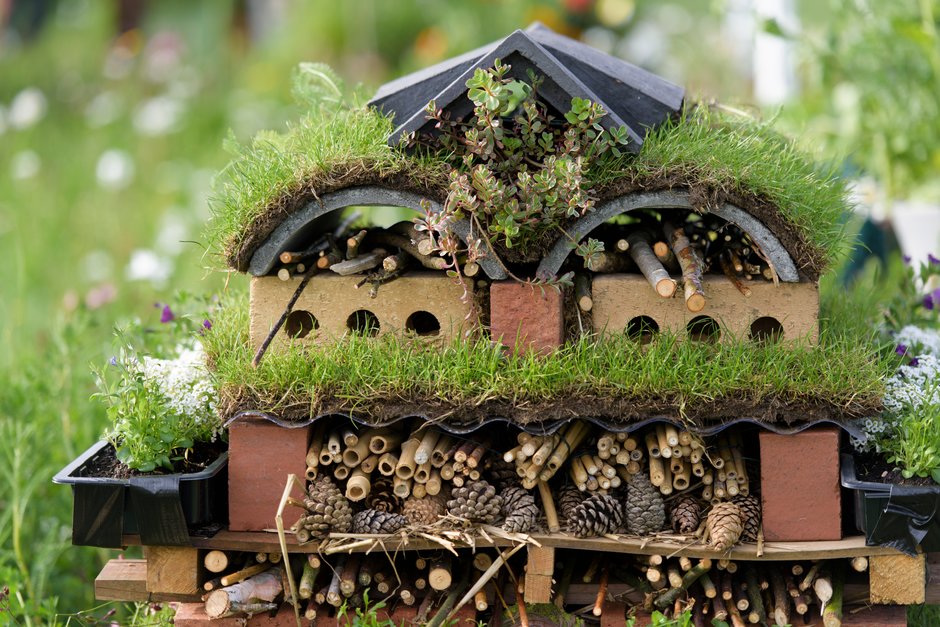
Creating habitats for beneficial insects is a fantastic way to promote biodiversity and natural pest control in your garden. Bug hotels provide shelter for creatures such as lacewings, ladybirds and solitary bees, which help to control pests and pollinate plants.
You don’t need a garden to help insects – a simple bug house can be hung on a balcony wall or placed on a windowsill. These can be made from recycled materials like hollow bamboo canes, pinecones and pieces of bark bundled together.
For those with gardens, a larger bug hotel can be created using old pallets, bricks, tiles and natural materials including straw, dried leaves and twigs. Place it in a sheltered, sunny spot to attract the maximum number of beneficial insects.
9. Go electric
Petrol-powered garden tools can be significant polluters – both in terms of carbon emissions and noise pollution. The RHS states that if the 21% of UK gardeners who use power tools switched from fossil fuel to green energy electric-powered tools, it would save the same amount of carbon that would be used driving around the planet 29,820 times.
For small gardens, electric or manual tools are more than adequate – an electric lawnmower or even a traditional push mower for small lawns, and hand tools for pruning and weeding. If you have a larger garden, consider investing in a battery-powered system where one battery can power multiple tools.
Remember that the most eco-friendly option might be no power tool at all – hand tools like shears, loppers and pruning saws are quiet, emission-free and often give a better finish, especially on smaller plants.
10. Test your soil
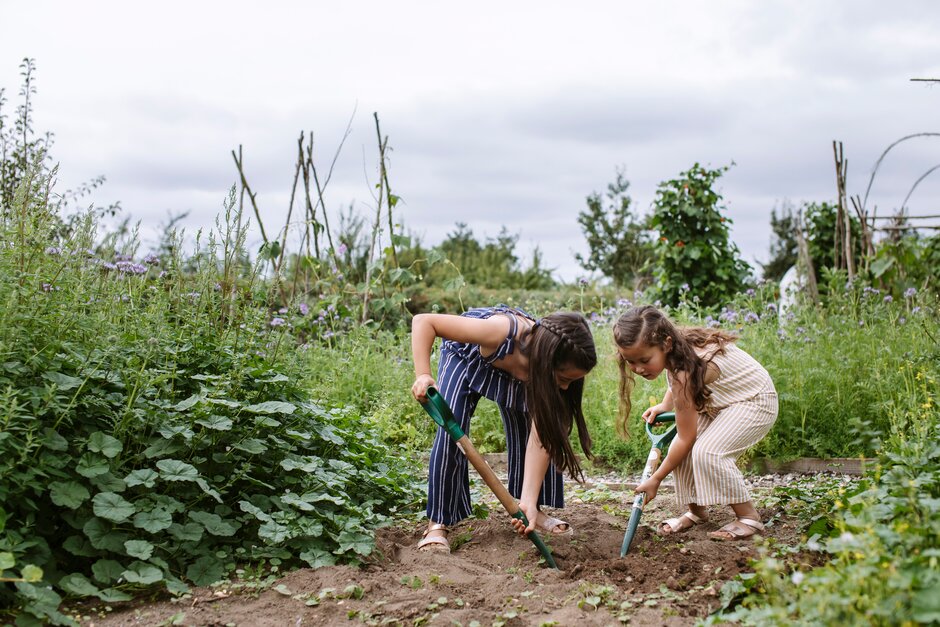
Understanding your soil type is key to successful, eco-friendly gardening. Knowing whether you have clay, sandy, chalky or loamy soil helps you choose plants that will thrive naturally without excessive watering, feeding or pest control.
Simple home soil tests can determine both the soil type and pH level. Once you know what you’re working with, you can select plants that will flourish in those conditions. Plants growing in their ideal conditions need fewer resources and are more resistant to pests and diseases.
For container gardeners, understanding the specific needs of your plants is equally important. Grouping plants with similar requirements for light, water and nutrients will help them thrive with minimal work on your part.
Plants for clay soils: Garrya, Forsythia, Rosa, Hydrangea, Sanguisorba, Ajuga, Epimedium, Primula
Plants for sandy soils: Pittosporum, Caryopteris, Cytisus, Phlomis, Eryngium, Nepeta, Origanum, Verbena
Plants for drought prone soils: Ozothamnus, Cistus, Lavandula, Genista, Hylotelephium, Verbena, Salvia, Nepeta
Plants for seasonally wet and dry soils: Cornus, Physocarpus, Hydrangea, Viburnum, Bistorta, Astrantia, Polystichum, Bergenia
Plants for gardens with damp soils: Sambucus, Hydrangea, Cornus, Leycesteria, Weigela, Zantedeschia, Primula, Ligularia, Astilbe
Plants for acidic soils: Rhododendron, Pieris, Camellia, Erica, Leucothoe, Glandora, Liriope, Tiarella
Plants for chalky soils or alkaline soils: Deutzia, Spiraea, Ceanothus, Choisya, Agastache, Aquilegia, Leucanthemum, Thalictrum
11. Build a pond
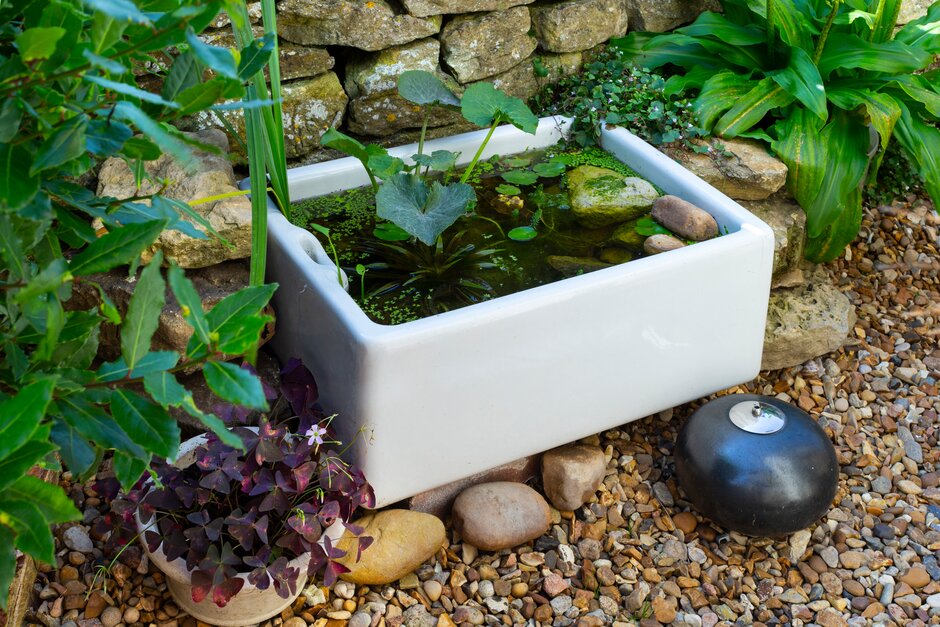
Water features, even very small ones, are beneficial for wildlife as they offer drinking and bathing spots for birds and habitats for all sorts of creatures. And you don’t need a large garden – even a small container can create a valuable micro-habitat.
Balcony gardeners can create mini ponds using a shallow, watertight container with some stones to provide access points for insects and small creatures. Add a few aquatic plants and position it where it will get some sunlight but not overheat.
Those with gardens might consider a larger pond, but even a buried bucket or old sink can make a a great feature. Include different depths, planting pockets and gently sloping sides or stones to allow creatures to enter and exit safely.
What to do next…
Making your garden more eco-friendly doesn’t have to happen all at once. Start with as many changes as you feel comfortable with this summer, and gradually incorporate more sustainable practices as you go.
Remember that even the smallest green spaces can make a difference when managed with the environment in mind. Window boxes buzzing with bees, balconies growing fresh herbs, and gardens working with nature rather than against it, all contribute to a healthier planet.
The RHS believes small changes to how we garden can make a significant difference, from the playful years to late adulthood, their mission is to be there for everyone on their lifelong adventure with gardening.
The RHS website features tips and advice on growing sustainably, and RHS members can access its personalised advice service.
For more guidance on going greener at home, take a look at our energy efficiency guides.
Copyright © 2000-2025 Rightmove Group Limited. All rights reserved. Rightmove prohibits the scraping of its content. You can find further details here.